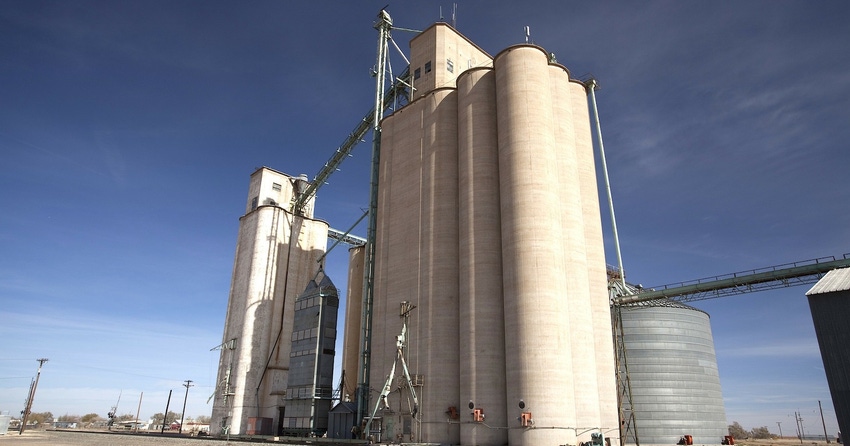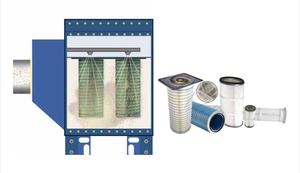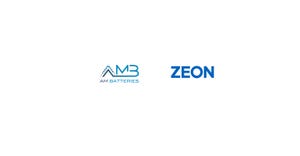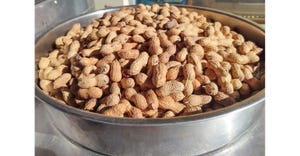NFPA Senior Engineer Laura Moreno spoke to Powder & Bulk Solids about updates in the 2020 edition of the commodity-specific fires and dust explosion prevention standard.

The newest edition of the National Fire Protection Association’s (NFPA) commodity-specific standard, “NFPA 61: Standard for the Prevention of Fires and Dust Explosions in Agricultural and Food Processing Facilities,” includes several important edits and additions.
Laura Moreno, Senior Engineer and Standards Lead, Industrial and Chemical for NFPA, spoke with Powder & Bulk Solids about some of the most notable changes in the 2020 edition of NFPA 61.
PBS: What were the most substantial changes made in the latest edition of NFPA 61?
Moreno: In the 2020 edition, changes have been made to continue aligning the organization of NFPA 61 with NFPA 652 where possible, and the deadline for completing a dust hazard analysis (DHA) for existing processes and facility compartments has been specified as Jan. 1, 2022. Surface resistivity requirements for conveyor belts, lag belts, and lagging have been revised, and a new statement has been added to exclude air-material separators with a dirty side volume of less than 0.2 m3 (8 ft3) from explosion protection requirements.
This edition contains new sections on spray dryer systems, mixers and blenders, and work activities that present an ignition source. The section on management of change has been revised to clarify what is required to be addressed versus what is recommended. Annex material has been added to provide information about the methods that can be used to complete a DHA; determining filtering efficiency of dust collectors; and protection methods for bins, silos, and tunnels where explosion venting is not practical. The table on agricultural dust test data has been updated and expanded to include additional dusts, and the example checklist for completing a DHA has been replaced with a more detailed, comprehensive example.
PBS: Why was the DHA deadline changed to Jan. 1, 2022 in the latest iteration of the standard?
Moreno: The 2017 edition of NFPA 61 specified that “For existing processes and facility compartments that are not undergoing significant modification, the owner/operator shall schedule and complete DHAs of bucket elevators, conveyors, grinding equipment, spray dryer systems, and dust collection systems within a five-year period from the effective date of the standard.” The effective date of the standard was June 2, 2016, so the DHA had to be completed by June 2, 2021. When the 2020 edition of NFPA 61 was being developed, the Technical Committee recognized that this date would expire while the 2020 edition was in effect, so a firm date of Jan. 1, 2022 was specified.
PBS: What should facilities that fall under NFPA 61 do to prepare for the standard’s new DHA deadline?
Moreno: Facilities should be working with a qualified person as described in the standard to make sure that the DHA process is underway or there is a plan to have the DHA started and completed by the deadline. Typically, a DHA team is put together consisting of individuals from the facility who are familiar with the process, equipment, and site, along with consultants or other qualified individuals who have expertise in conducting DHAs. The team members could then prepare by gathering information about the facility such as properties of the materials involved, history of operation, types and location of process equipment, etc. to assist in answering the questions that are explored during the DHA process.
PBS: How does this latest edition of NFPA 61 integrate NFPA 652?
Moreno: The Technical Committee reviewed NFPA 652 thoroughly to line up with the layout of NFPA 652 for ease of finding similar or conflicting requirements (for example, housekeeping requirements are located in section 8.4 in both NFPA 652 and NFPA 61). The committee also reviewed NFPA 652 and extracted some requirements that apply to facilities that fall under the scope of NFPA 61, so that users can look in NFPA 61 to find all requirements that apply to them. These sections are indicated by an extract tag in NFPA 61. A tag after a requirement that says “[652:7.1.2]” indicates that section of NFPA 61 is directly extracted from NFPA 652 paragraph 7.1.2.
PBS: Does the most recent version of NFPA 61 place greater emphasis on DHAs over performance-based design options? If so, why?
Moreno: I would not say that is the case necessarily; performance-based design options are only a small portion of the standard (one chapter) while the rest of the standard is dedicated to prescriptive design methods, but that is the case for most of the NFPA standards that allow performance-based design. The prescriptive requirements of NFPA 61 and the other combustible dust standards are heavily based off of the DHA results because those results will highlight which areas of a facility need hazard management such as explosion protection or fire protection.
PBS: Is there a chance this deadline could be moved again due to the ongoing COVID-19 pandemic?
Moreno: For other industries that are complying with the other dust standards such as NFPA 652, NFPA 654, and NFPA 664, the DHA deadline is September 2020 so we have received this question frequently over the recent months. At this time there have not been any changes to the DHA deadlines in the combustible dust standards and NFPA has not received any formal requests to revise the dates. Since NFPA is not an enforcing authority and therefore does not enforce the DHA deadline, we are encouraging facilities to reach out to their code enforcers (state or local AHJs, OSHA, etc) if they think they will have trouble meeting the deadline. If an interested party would like to submit a Tentative Interim Amendment (TIA) to one or more of the combustible dust standards, they can learn more at nfpa.org/tia. TIAs are amendments to an NFPA standard that are effective only between editions of a standard. The submitter would need to provide a statement of the problem and a reason for the emergency nature providing prompt action.
Moreno has served in various engineering roles since joining NFPA in May 2013. She currently serves as staff liaison to the combustible dust, explosion protection, hot work, and hazardous materials Technical Committees.
To learn more about NFPA 61, please visit the organization’s page on the standard here.
About the Author(s)
You May Also Like




